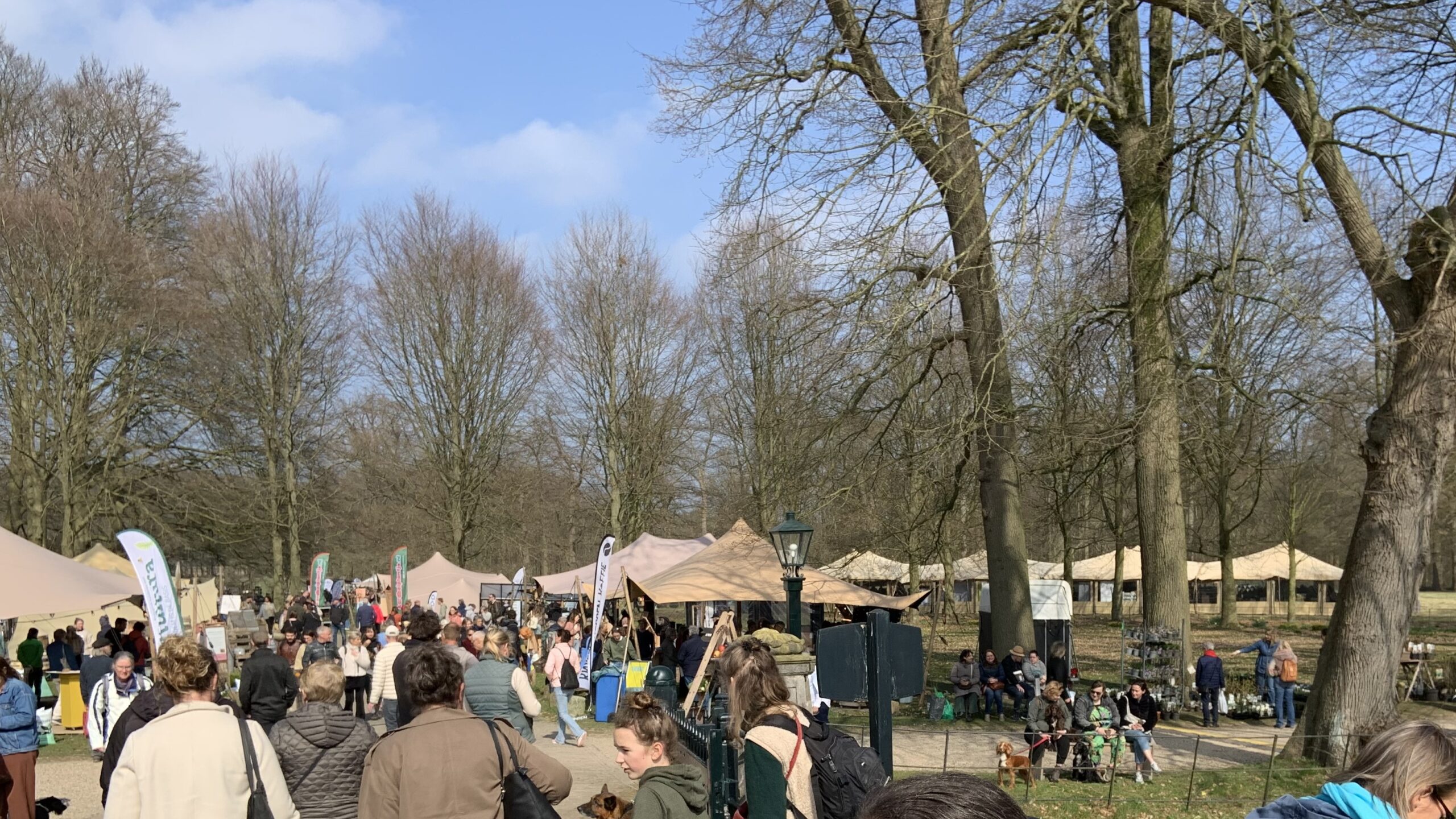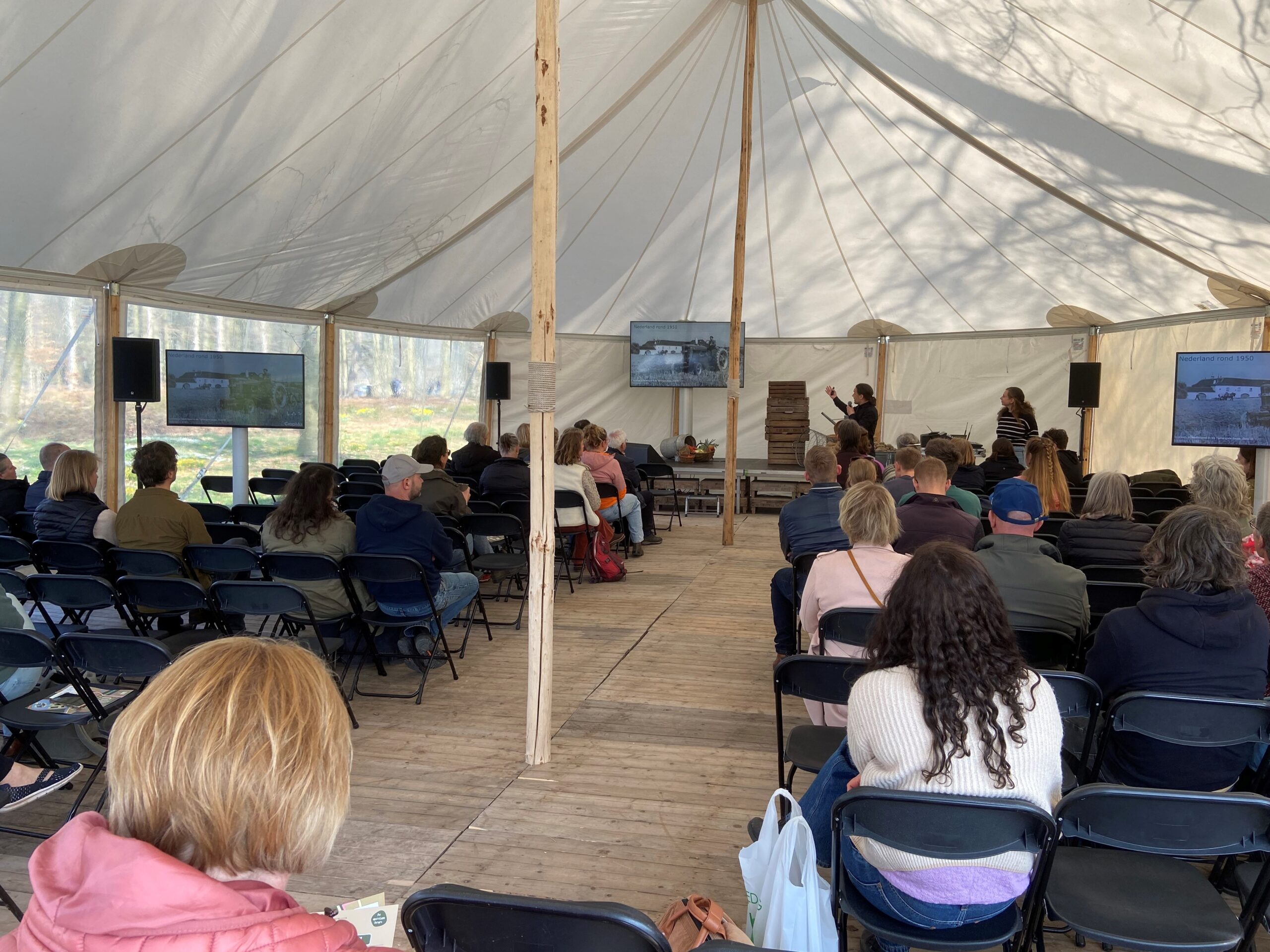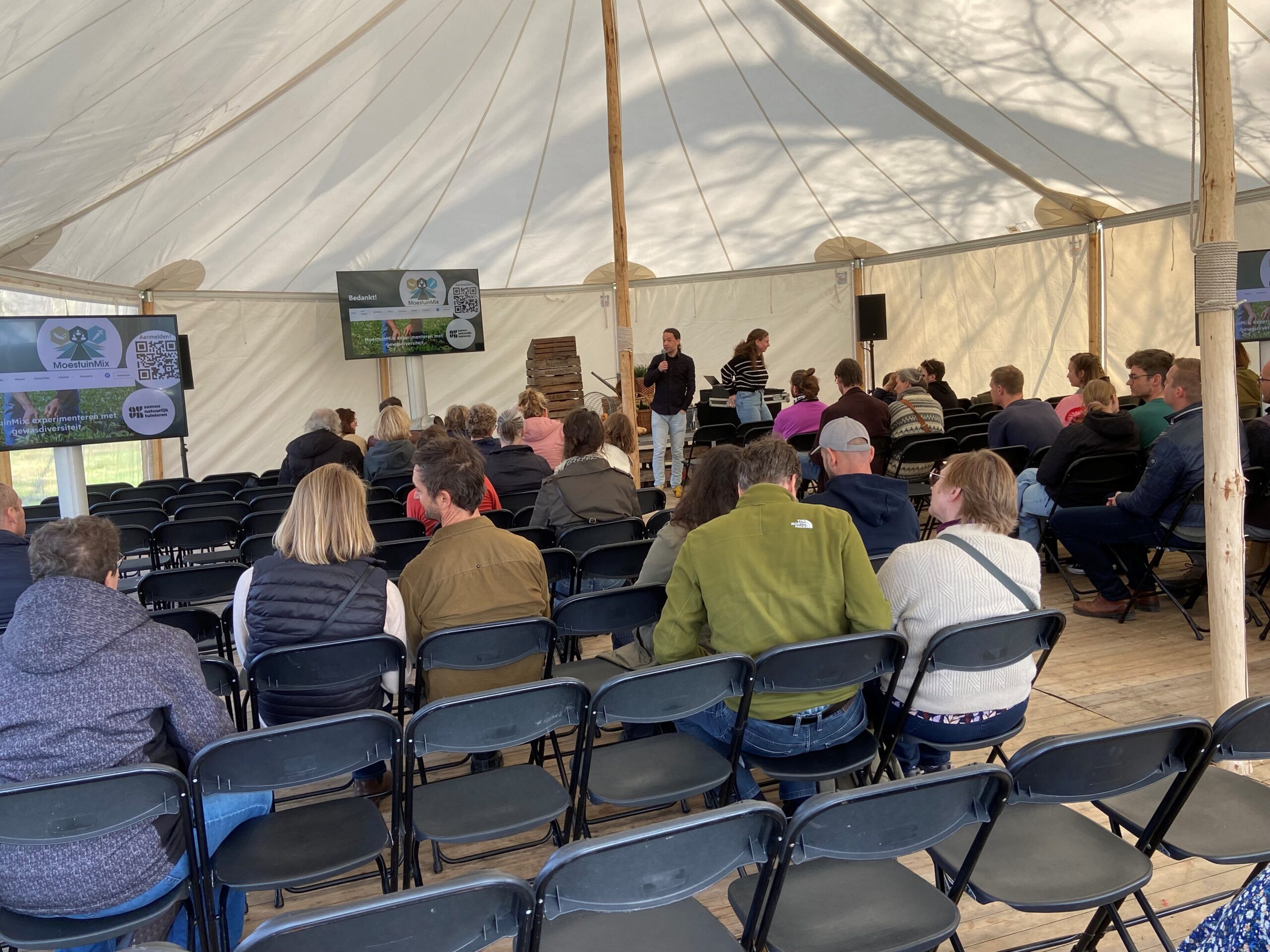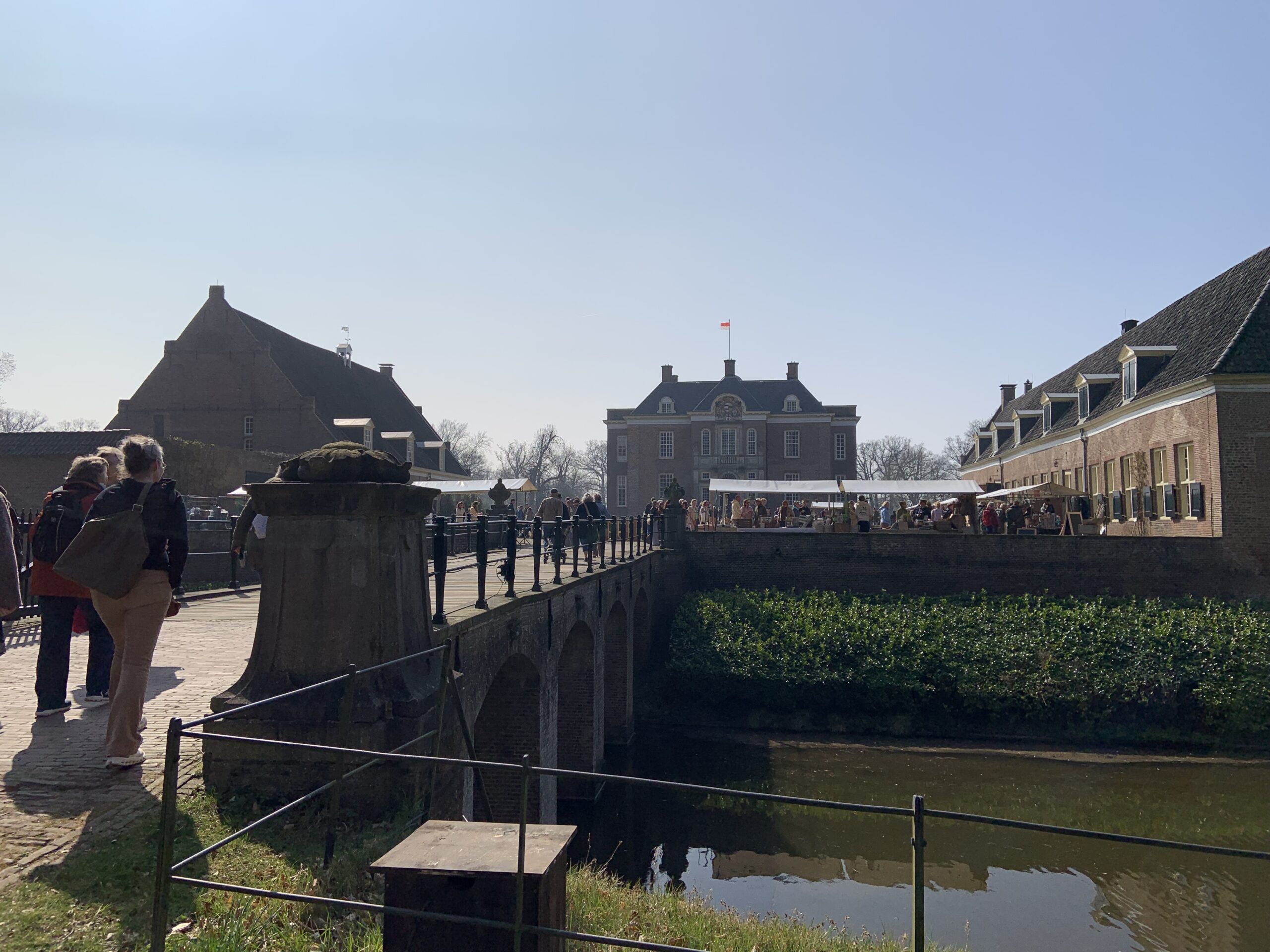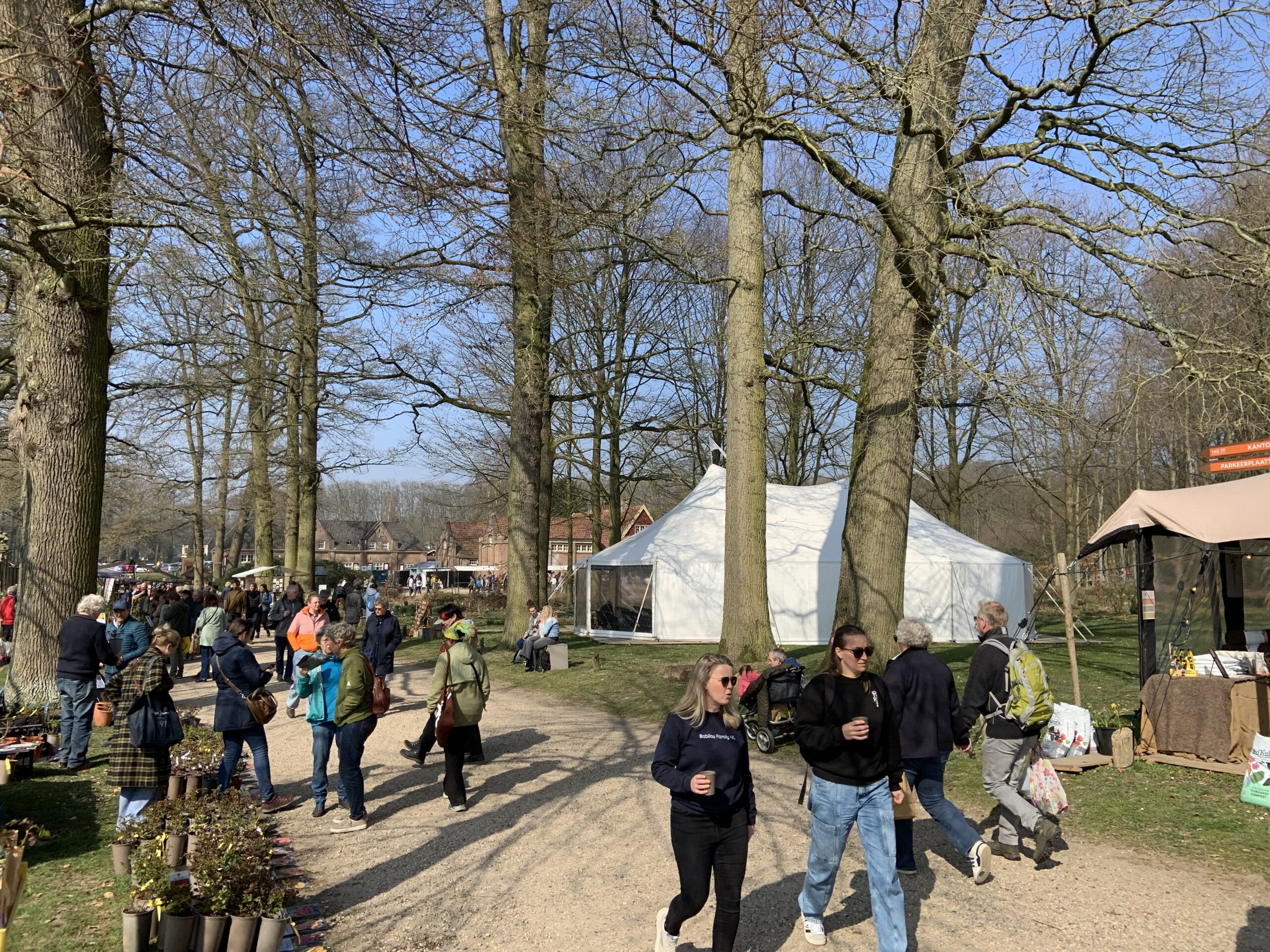On 28 March, CropMix visited De Moestuinbeurs! On the beautiful Middachten Estate, Erik H. Poelman and Yvonne Florissen gave a presentation on how we use MoestuinMix to build a bridge between vegetable gardeners and professional agriculture.
Changes in agriculture
Since the 1950s, Dutch agriculture has changed enormously. Small-scale and mixed farms with some livestock, arable farming and a vegetable garden, gave way to increasingly large-scale and industrialised farms. Large monocultures became the norm, easy to work with large machinery. These monocultures are efficient but require a lot of external inputs. They reduce biodiversity and thus the resilience of fields. Within CropMix, we explore alternatives based on ecological processes.
Crop diversity
The question at the heart of CropMix is: How can we produce food sustainably in the Netherlands? Our research focuses on crop diversity: combining different crops in one field, for example through strip cropping. This promotes biodiversity in fields and can help leave disease pressure and encourage natural pest control.
A common question from arable farmers considering strip cropping or other forms of mixed cropping is: which crops go well together? To find out, we are enlisting the help of experienced and inexperienced vegetable gardeners for the second time next year to test different combinations in their own vegetable gardens.
How can kitchen gardeners contribute?
Kitchen gardeners have a lot of knowledge, often built up through years of experience or through exchanges with each other, precisely about combining crops. That knowledge can be of value to agriculture. They know the examples of crops that work well together, such as onion and carrot, and are also used to growing crops interchangeably, side by side or scattered over time on the same patch. All these forms of crop diversity are fairly unusual for current agriculture, but offer ecological benefits.
In our citizen science project MoestuinMix we try to translate that knowledge into useful information for farmers and also let kitchen gardeners learn from each other. The participants of MoestuinMix are testing different crop combinations. To ensure that all locations can be compared, we chose a fixed combination with broad beans. Last year, participants tested the combination garden bean with pumpkin and a combination of garden bean with a self-selected crop. This year, we are testing the combination of broad bean and beetroot and the second combination is again broad bean with a crop of your choice.
Because each garden has two combinations of garden bean, you can also make comparisons within the garden. Not only do we compare growth and yield (harvest), but enthusiastic participants can also look at aphids and natural enemies and pollinators. All these aspects can also be compared between gardens. For example, are there more or fewer aphids on broad beans next to pumpkin than next to spinach?
What does it teach us?
The kitchen gardeners not only show what creative combinations of crops are possible, but also how they perform in terms of yield and natural pest suppression, for example. The kitchen gardeners test hundreds of combinations. While some combinations may not be so attractive to farmers, because the products are not easy to market or the cultivation is labour-intensive, we do learn what mechanisms play a role in crop-diverse systems. And perhaps it will show that we need to make further use of robots to make the work manageable for a farmer.
The bigger picture
How do we scale up from the small-scale kitchen garden to large-scale agriculture? That, of course, is the question. The ecological processes that a kitchen garden benefits from, such as natural pest control, no longer work so well in large monocultures. Therefore, over the next few years, with the help of a network of 28 farmers, various system trials at the university and kitchen gardeners, we will investigate how these processes work and can be incorporated into professional agriculture.
Want to know more? Take a look at our results so far.

